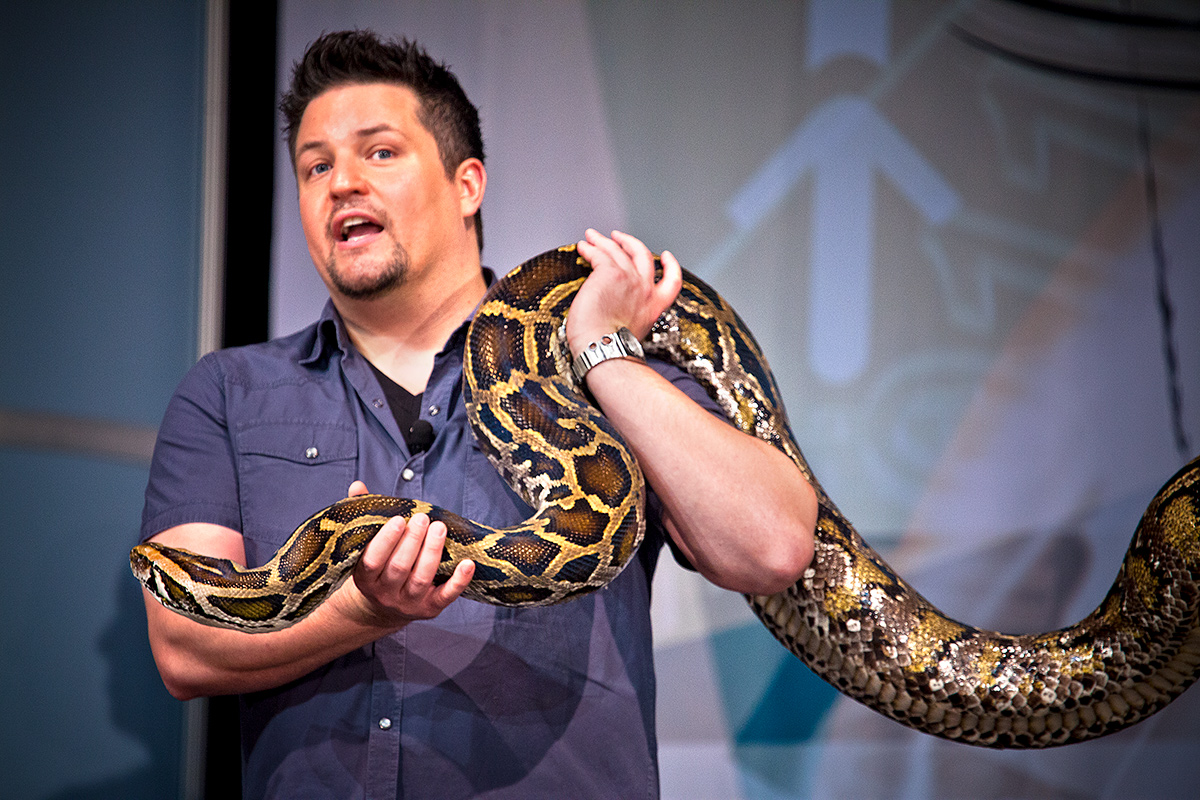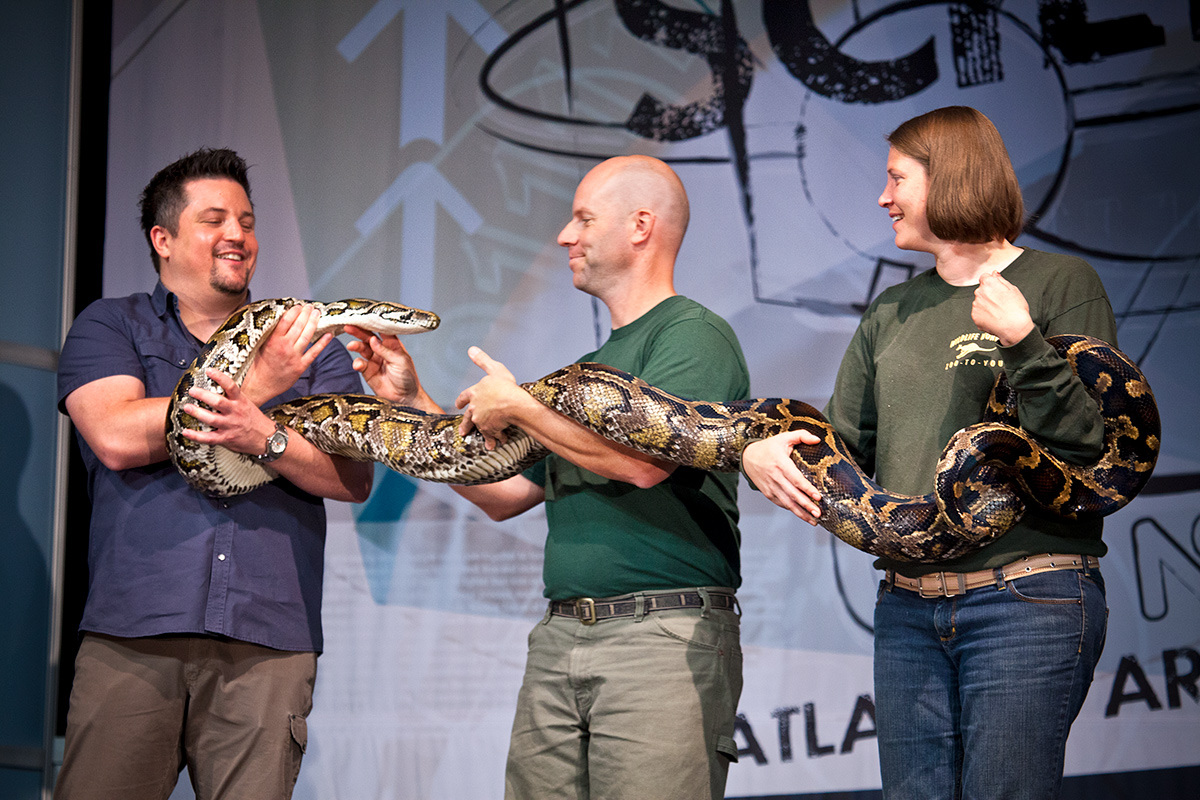Wild Things
David Mizejewski 97C wants you to get back to nature
The kangaroo had stage fright.
“This is a juvenile red kangaroo,” naturalist David Mizejewski 97C told the audience in the Georgia World Congress Center ballroom, as he gave the skittish marsupial back to its handler. “Kangaroos are actually born very, very premature, as fetuses, and finish developing in their mother’s pouch. This one is fourteen months old, but has only been nine months out of the pouch.”
As the opening speaker for the National Science Teacher Association conference in Atlanta in November, Mizejewski talked about reconnecting children with the outdoors, and finished by introducing a host of “animal ambassadors.”
The science teachers in the audience were far from immune to the charms of the animals borrowed from the North Georgia Zoo near Helen, oohing and aahing as the creatures were brought out one by one: a grey timber wolf (“they used to be found over much of the lower forty-eight, but now there are only teeny pockets of them left”), a nocturnal barn owl (“its asymmetrical ears allow it to hunt in the pitch black”), a five-foot-long American alligator (“an endangered species success story”), and a Burmese python (“this one used to be a pet in a kindergarten classroom until the day the janitor didn’t secure the cage”).
As an author and spokesperson for the National Wildlife Federation, Mizejewski has spent his career trying to reconnect people to the natural world that surrounds them. He wrote the popular guide Attracting Birds, Butterflies, and Other Backyard Wildlife, hosted and coproduced Backyard Habitat on Animal Planet, and writes an “animal oddities” blog for the channel’s website. He’s also appeared on Chelsea Lately, NBC’s Today, and the Conan show—bringing along baby jaguars, monitor lizards, hairy armadillos, huge cane toads, and wild boars. “As the saying goes, you only protect what you love, and you only love what you know,” he says.
In a world where kids can name more corporate logos than species of insects or trees, says Mizejewski, teachers and parents need to turn these trends around by making the outdoors intriguing. Scavenger hunts, hikes, gardening, field trips, and just “throwing kids outside” to explore can make all the difference. “Parents are worried about the dangers out there, but there are more risks associated with a sedentary, indoor lifestyle,” he says.
Strange animal facts are his forte: for example, when your dog jumps up on you and tries to “kiss” you when you get home from work, it’s not primarily that he’s happy to see you; it’s genetically coded behavior inherited from their wolf ancestors who, as pups, would go to the den’s opening and jump up to lick regurgitated food from their parents’ mouths. Owls can’t turn their heads all the way around a la The Exorcist but they can rotate their necks as much as 270 degrees in each direction. And an American alligator’s bite can have as much force as “having a pickup truck dropped on you.”
Following the conference, Mizejewski, whose Emory degree is in human and natural ecology, was on his way to observe polar bears migrating along Hudson Bay with Polar Bears International and to record how the bears are faring in the face of ice loss and a warming Arctic.
“We know already that they have added forty days to the period of time they aren’t eating—they don’t eat while on land, they only eat by hunting seals in the water,” Mizejewski says. “This lack of nutrition is lowering pregnancy rates and increasing infant mortality.”












